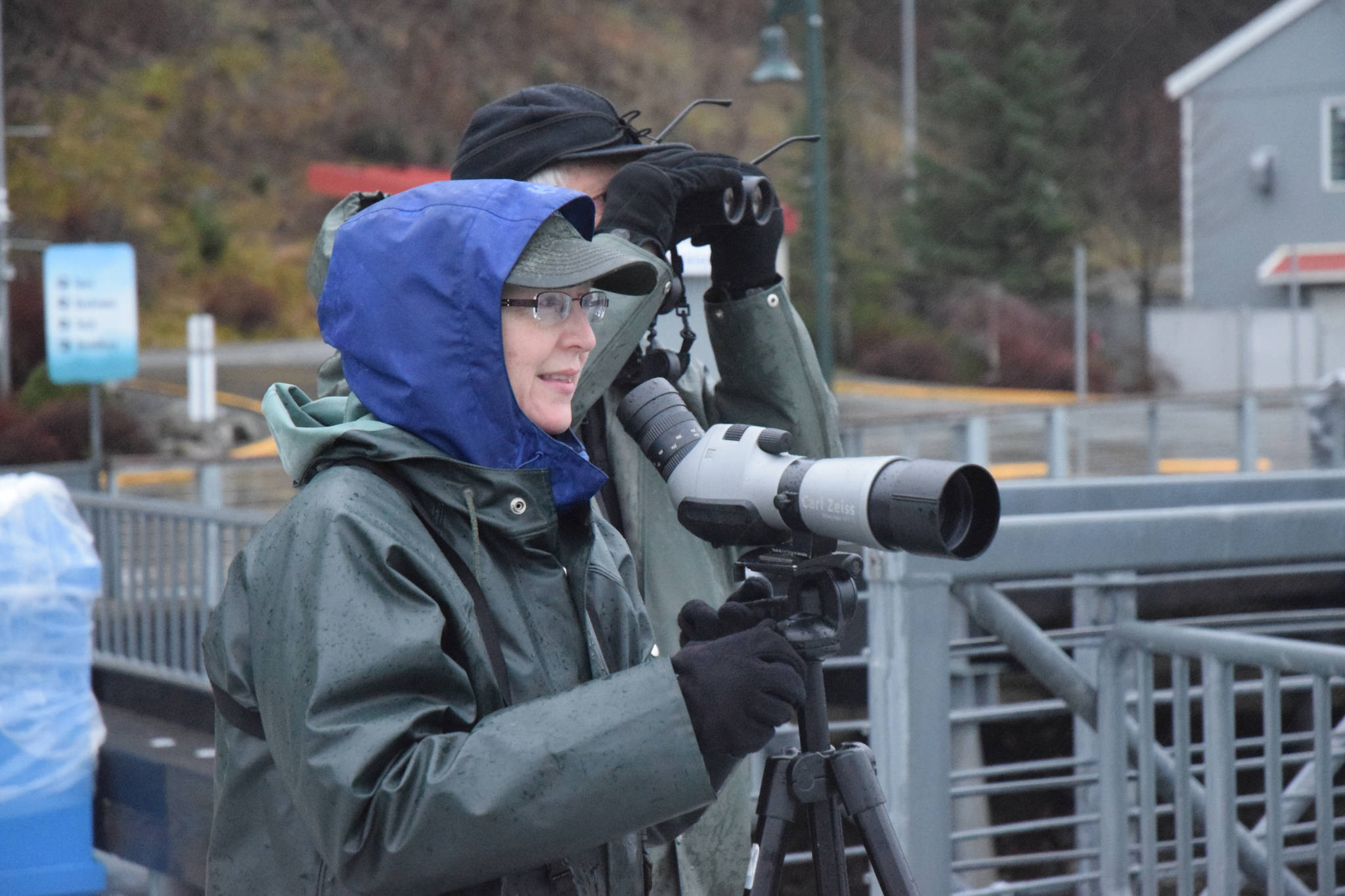Audubon Alaska bird watchers conducted their long-standing Christmas Bird Count on Saturday with concern in the back of their minds: 15 percent of Alaska bird species are declining or depressed, their most recent research shows.
Laurie Lamm and Ron Berg canvassed the downtown area Saturday morning. Kingfishers, loons and gulls could all be found flying in the pouring rain and Taku winds.
A group of 10 common mergansers landed in the water in front of the cruise ship dock. Lamm spotted them in her telescope. Two of them — the females of the group — had dark plumage.
Lamm and Berg were excited to see cormorants, a species common in the Lower 48 but less abundant in Alaska. The red-faced cormorant made the Audubon Society’s “red” watchlist this year, meaning it’s in significant danger of decline.
“If you go down south, people see a lot of cormorants, but this is a different species, so it gets me a little excited,” Lamm said.
The Audubon Society tracks 232 birds with its Alaska Watchlist. Birds are scored by four different criteria to determine their vulnerability and then placed on red and yellow lists. A high score lands a species on the red list, which includes birds in high danger of disappearing from Alaska.
Thirty-five species made the list this year, explained Dr. Nils Warnock, Executive Director of Audubon Alaska. Warnock presented the findings at a Thursday Audubon Society presentation at the University of Alaska Southeast Recreation Center.
A confluence of disappearing prey and habitat may be to blame for the decline of Alaska’s bird populations, Warnock explained. Insects, a key prey for many birds, are declining worldwide. Industrial development in China is stripping many species of crucial bird habitat.
Disappearing permafrost and warming ocean temperatures due to human-caused global warming are also factors, Warnock said. Some birds are seeing a “double whammy” effect of the loss of habitat and prey.
“We’re seeing a cascade of effects,” Warnock said.
But there are species that are doing better, Warnock said. The emperor goose is a good example of this. Significant declines in emperor goose populations in the early 1980s halted winter and fall hunting beginning in 1986.
Since the hunting closure, the emperor goose has rebounded, and in 2015, a three-year index of the species hit 81,875 geese. The abundance allowed the first limited hunt of emperor goose in Alaska this year.
• Contact reporter Kevin Gullufsen at 523-2229 or kevin.gullufsen@juneauempire.com. Follow him on Twitter at @KevinGullufsen.

